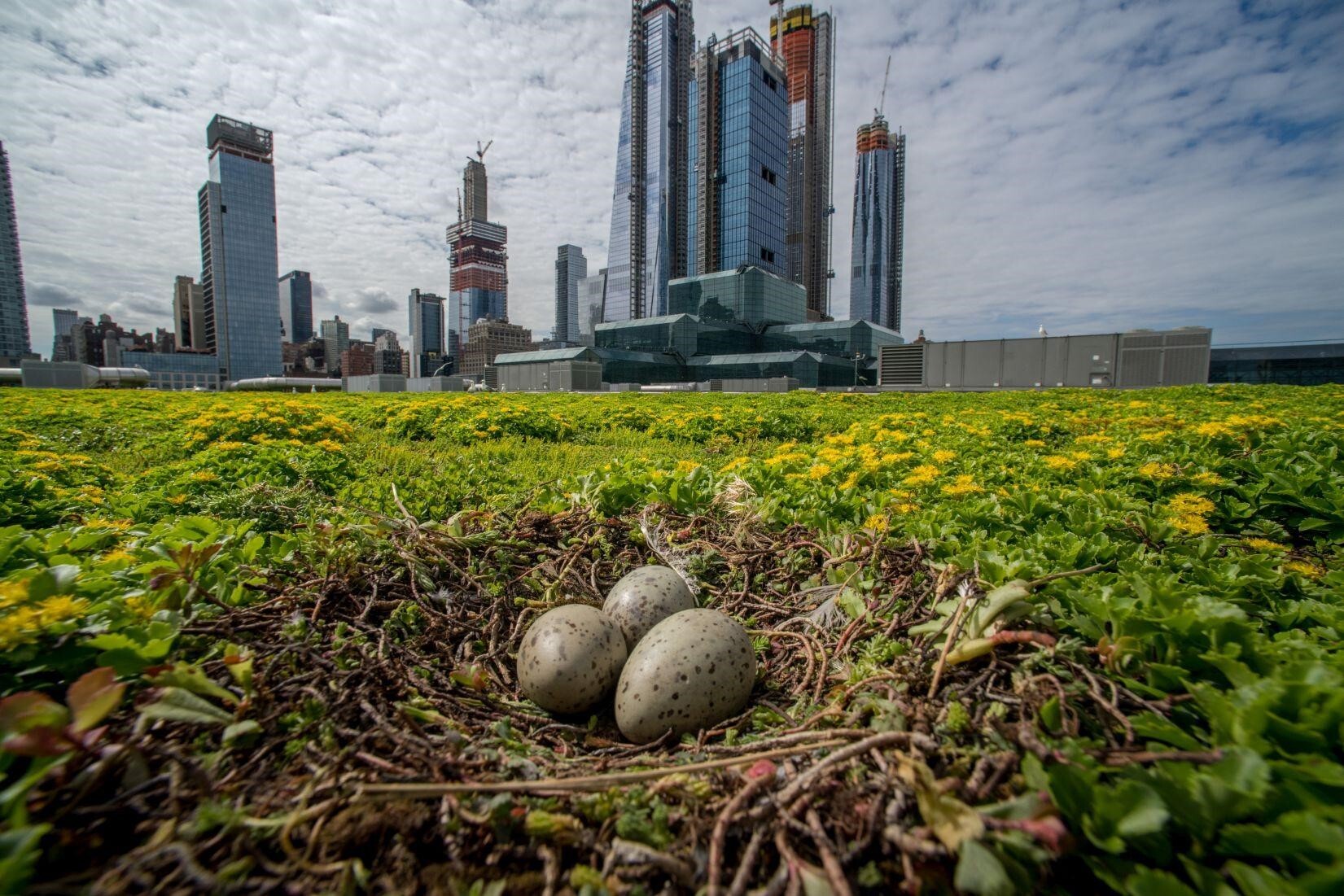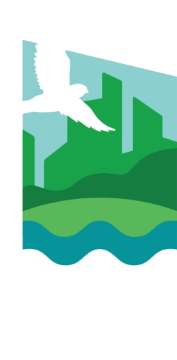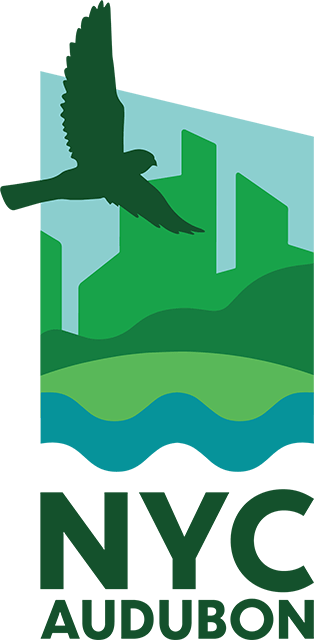Green Roofs and Infrastructure
Kingsland Wildflowers Green Roof atop Broadway Stages in Greenpoint, Brooklyn. Photo: NYC Audubon.
Historically, NYC Audubon has advocated for the conservation of natural areas in New York City with two primary goals in mind: the preservation of habitat for birds, and the safeguarding of ecological services that protect both people and wildlife in our city. Projects such as Buffer the Bay (1987), Buffer the Bay Revisited (1993), and Jamaica Bay Coastal Habitat Restoration Project (1994-1996) aimed to protect land surrounding Jamaica Bay as bird habitat, and as a buffer from storms and flooding.
Protecting and preserving coastal habitat remains a critical priority. In recent years, as the need to protect the City has become ever more imperative in the face of climate change, city planners have begun to design built infrastructure to mimic the ecosystem services provided by natural areas. Efforts to directly preserve natural habitat and create green urban infrastructure are, in fact, complementary.
Green Roof Tax Abatement
NYC Audubon’s advocacy efforts focus on legislation that would help reduce urban heat island effects by absorbing and dissipating heat, improve air quality, and mitigate the negative impacts of stormwater runoff. Moreover, green roofs enhance urban biodiversity by providing habitats for birds and other wildlife, and contribute to carbon capture, reducing greenhouse gas emissions. New Yorkers are needing to adapt to increasing temperatures and more frequent and intense rainfall due to climate change. Migratory birds require stopover habitat as they pass through NYC, allowing them to refuel and continue migration. Green roofs are a necessary resiliency and conservation tool for humans and birds at a time of global extreme weather crisis and migratory bird population decline.
New York City Audubon supports the renewal of the Green Roof Tax Abatement, which would increase green roofs in NYC and the many benefits that green roofs provide to our environment and communities.
Introduced in the NY State Senate by State Senator John C. Liu (District 16) and the NY State Assembly by State Assemblymember Nily Rozic (District 25), the renewal of the Green Roof Tax Abatement would incentivize building owners to install green roofs by offering tax abatements of up to $15 per square foot of green roof installed in areas with historic environmental injustice. The renewal and improvement of this program is a win-win for birds, people, and the City, and will help to transform the city's skyline. The GRTA needs your support.
Introduced in the NY State Senate by State Senator John C. Liu (District 16) and the NY State Assembly by State Assemblymember Nily Rozic (District 25), the renewal of the Green Roof Tax Abatement would incentivize building owners to install green roofs by offering tax abatements of up to $15 per square foot of green roof installed in areas with historic environmental injustice. The renewal and improvement of this program is a win-win for birds, people, and the City, and will help to transform the city's skyline. The GRTA needs your support.
We are thankful that the renewal of the Green Roof Tax Abatement has been co-sponsored thus in the NY State Assembly by NY State Assemblymembers: Dickens (District 70), Epstein (District 74), Simone (District 75), Colton (District 47), Zinerman (District 56), Reyes (District 87), Simon (District 52), Rosenthal (District 67), De Los Santos (District 72), Shimsky (District 92), Seawright (District 76), Bichotte Hermelyn (District 42), Paulin (District 88), Levenberg (District 95), Stern (District 10), Jensen (District 134), Sillitti (District 16), Burdick (District 93), and Weprin (District 24). The renewal of the Green Roof Tax Abatement has passed in the NY State Senate.
TAKE ACTION FOR THE GRTA
The renewal Green Roof Tax Abatement already has great momentum and could use your help! Here is what you can do to help get this bill over the finish line and help save the lives of wild birds:

Herring Gull eggs on the Jacob K. Javits Convention Center Green Roof. Photo: Jacob K. Javits Convention Center
CALL YOUR ELECTED OFFICIALS
Please call your New York State Assemblymember and urge them to co-sponsor the renewal of the Green Roof Tax Abatement, proposed by Assemblymember Nily Rozic. (or thank them if they already have). You can use the following link if you're unsure of who your New York State Assemblymember is. If you need some ideas about what to say, here is a script you can use to navigate your call:
“Hello, [ELECTED OFFICIAL's NAME]! My name is [YOUR NAME], and I strongly support the renewal of the Green Roof Tax Abatement. I would like your support by co-sponsoring it and helping it pass.
New Yorkers are needing to adapt to increasing temperatures and more frequent and intense rainfall due to climate change. Green roofs are a necessary resiliency and conservation tool. Green roofs also reduce urban heat island effects by absorbing and dissipating heat, improve air quality, and mitigate the negative impacts of stormwater runoff. Moreover, green roofs enhance urban biodiversity by providing habitats for birds and other wildlife, and contribute to carbon capture, reducing greenhouse gas emissions.
[INSERT PERSONAL MESSAGE IF YOU HAVE ONE]
Please help us pass this bill, [ELECTED OFFICIAL’S NAME]. We are counting on your support.”

Assembly Member Jaimie Williams. Photo: Assemblymember Williams
Ask Assemblymember Williams to Put GRTA on the Agenda
Advocate for wild birds and their habitats by urging Assemblymember Jaimie Williams to put the Green Roof Tax Abatement on the agenda of the next Real Property and Taxation Committee meeting.
Click below to contact Assemblymember Williams’ office and repeat the ask:
“Please put the Greenroofs Bill A.6901-A (Rozic) onto the next Real Property & Taxation Committee agenda.”
The Problem of Stormwater
The U.S. Environmental Protection Agency estimates that nationwide, 10 trillion gallons a year of untreated stormwater runs off roofs, roads, parking lots, and other paved surfaces, often combined with household sewage, into urban rivers and waterways. These Combined Sewer Overflows (CSOs) represent a serious, and with climate change, growing problem for our planet. In New York City alone, about 30 billion gallons of CSOs are discharged annually, when rainwater flows into our sewers and overwhelms the water treatment plants, resulting in untreated waste water being discharged directly into our waterways.
In addition to the clear threat to the health of humans and wildlife, there is also mounting evidence that elevated nitrogen levels in CSOs contribute to the rapid erosion of our salt marshes—which control shoreline erosion and provide temporary resting grounds for the thousands of weary birds that pass through our area during migration The regular overflow of raw sewage and runoff from paved surfaces is a serious threat to the health of the Jamaica Bay ecosystem. Learn more about water quality and stormwater issues in New York City.)
Creating Solutions—and Habitat
New York City is trying to address CSOs through a variety of responses developed in part by its Department of Environmental Protection (DEP). “Gray” infrastructure—traditional solutions such as sewage treatment plants and storage tanks—are being updated or rebuilt with green alternatives—green roofs, rain barrels, rain gardens, permeable pavement, tree pits with below-grade water catchments, and bioswales that catch and store rainwater, preventing it from causing sewage overflow events.
These green infrastructure projects are usually designed with stormwater capture and management as a main priority, but they also provide countless other benefits to our urban ecosystem, including lowered temperatures, improved air quality, and reduced noise pollution. Though not a replacement for habitat lost to development, these projects may help preserve the City’s remaining salt marshes by reducing stormwater run-off. And they may provide new habitat that will enable birds and other wildlife to survive, and thrive, in our urban environment.
NYC Audubon has been involved in a number of green infrastructure projects, detailed below. This work is enriched by cooperative partnerships, and to this end we facilitate the Green Roof Researchers Alliance, a consortium of over 60 green roof researchers. In collaboration with Fordham University and the American Museum of Natural History, we conduct biodiversity monitoring of green infrastructure sites focused on birds, bats, and insects.


